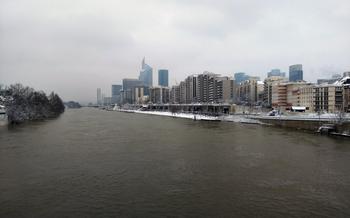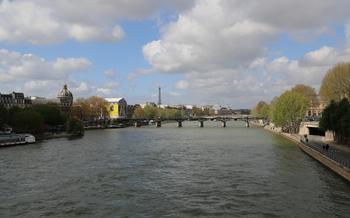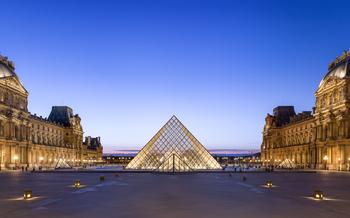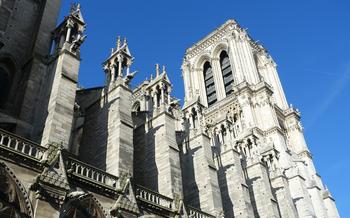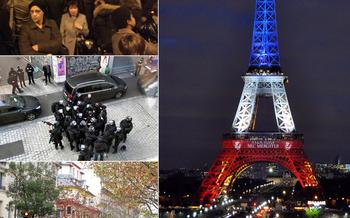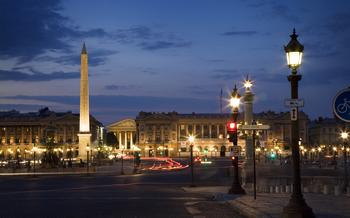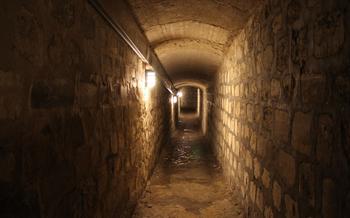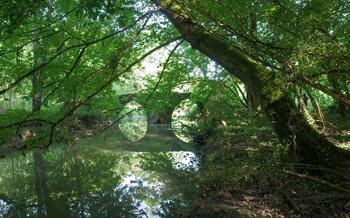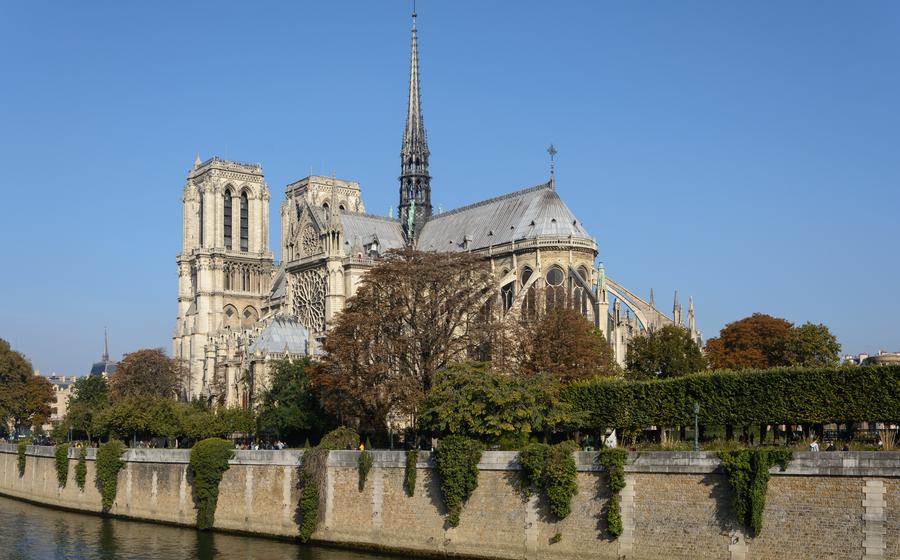
Notre Dame Cathedral
- Notre Dame Cathedral: A Timeless Masterpiece
- Unveiling the History of Notre Dame
- Exploring the Architectural Marvel
- The Enchanting World of Art and Stained Glass
- The Cultural and Spiritual Significance
- Planning Your Visit to Notre Dame Cathedral
- Immerse Yourself in the Surrounding Area
- Capture the Perfect Photo Opportunity
- Unforgettable Rooftop Views
- Notre Dame's Hidden Gems and Lesser-Known Treasures
- Notre Dame's Musical Heritage
- Organ Concerts
- Choir and Choral Music
- Bells and Carillons
- Music Festivals
- The Cathedral in Literature and Arts
- Special Events and Celebrations
- Notre Dame's Enduring Legacy
- Insider Tip: Secret Entrance
Notre Dame Cathedral: A Timeless Masterpiece
Notre Dame Cathedral stands as a testament to the enduring power of faith, human ingenuity, and artistic brilliance. Its history is a rich tapestry woven from the threads of time, beginning in the 12th century when Bishop Maurice de Sully envisioned a grand cathedral that would surpass all others in Christendom. Over the following centuries, skilled craftsmen and architects poured their hearts and souls into its construction, meticulously carving intricate details into the stone, raising towering spires that pierced the heavens, and crafting magnificent stained-glass windows that cast a kaleidoscope of colors onto the interior. Today, Notre Dame Cathedral stands as a symbol of resilience, having survived wars, revolutions, and fires, emerging as a beloved icon of Paris and a UNESCO World Heritage Site. Its timeless beauty and spiritual significance continue to inspire awe and reverence in the hearts of millions who visit its hallowed halls each year.
Unveiling the History of Notre Dame
Notre Dame Cathedral's history is as rich and captivating as its architecture. The Cathedral's construction began in the 12th century and spanned over two centuries, showcasing the dedication and perseverance of its builders. Over the years, the Cathedral underwent several modifications and additions, reflecting the evolving tastes and needs of its time.
Significant historical events have unfolded within the walls of Notre Dame. It served as the stage for royal coronations, including that of Napoleon Bonaparte in 180Religious ceremonies and national celebrations have also taken center stage, making the Cathedral a witness to the triumphs and trials of the French people.
Despite facing wars, revolutions, and devastating fires, Notre Dame has endured, standing as a symbol of resilience and continuity. The most recent fire in 2019 brought the world's attention to the Cathedral's fragility and the urgent need for preservation. The ongoing restoration efforts are a testament to the enduring legacy of Notre Dame and the determination to safeguard its architectural and historical significance for generations to come.
Exploring the Architectural Marvel
Notre Dame Cathedral stands as a testament to the ingenuity and artistry of the Gothic architectural style. Admire the pointed arches that soar towards the heavens, creating a sense of awe and grandeur. Gaze upon the intricate ribbed vaults, which distribute the weight of the massive structure while allowing for the creation of vast, open spaces. Marvel at the flying buttresses, which lend support to the walls and enable the construction of the Cathedral's towering height.
The exterior of Notre Dame is adorned with a wealth of sculptures, gargoyles, and decorative elements that bring the Bible to life in stone. From the serene figures of saints to the grotesque creatures that serve as waterspouts, each detail contributes to the Cathedral's rich visual tapestry. Inside, the soaring columns and vaulted ceilings create a sense of awe and inspiration, while the delicate interplay of light and shadow through the stained-glass windows evokes a mystical and ethereal atmosphere.
The Cathedral's symbolism and iconography are deeply intertwined with its architecture. The rose windows, with their intricate patterns and vibrant colors, represent the celestial realm and the connection between heaven and earth. The gargoyles and chimeras, often depicted with grotesque features, serve as a reminder of the duality of human nature and the eternal battle between good and evil.
The Enchanting World of Art and Stained Glass
Notre Dame Cathedral is renowned for its exquisite stained-glass windows, which are considered masterpieces of the Gothic era. These windows, crafted by skilled artisans over centuries, depict biblical narratives, allegorical scenes, and intricate geometric patterns. The vibrant colors and intricate details of the stained glass create a mesmerizing spectacle that transforms the Cathedral's interior into a kaleidoscope of light and color.
One of the most notable features of the Cathedral's stained glass is its storytelling ability. The windows narrate biblical stories and parables, allowing visitors to immerse themselves in the tales of the Old and New Testaments. From the creation of the world to the life and sacrifice of Jesus Christ, the windows offer a visual interpretation of the Bible's teachings.
The Cathedral also boasts three grand rose windows, each adorned with unique patterns and symbolism. The west rose window, known as the "Great Rose," is the largest and most elaborate. It features a depiction of Christ surrounded by angels, prophets, and saints, representing the celestial realm. The north and south rose windows, though smaller in size, are equally impressive, depicting scenes from the life of the Virgin Mary and the life of Christ, respectively.
In addition to the traditional stained-glass windows, Notre Dame Cathedral has also embraced contemporary art installations in recent years. These installations, often temporary in nature, offer a modern interpretation of the Cathedral's rich history and spiritual significance. From abstract sculptures to interactive light displays, these contemporary works of art create a dialogue between the past and the present, inviting visitors to experience the Cathedral in a new and thought-provoking way.
The Cultural and Spiritual Significance
Notre Dame Cathedral stands as a testament to the profound cultural and spiritual significance it holds for the people of Paris and France. It serves as a place of worship, pilgrimage, and spiritual contemplation for Catholics around the world, attracting millions of visitors each year. Beyond its religious significance, the Cathedral has become a national symbol of France, representing its rich cultural heritage and identity. Its distinctive Gothic architecture, intricate stained-glass windows, and centuries-old history have made it an enduring symbol of the country's artistic and cultural achievements. In recognition of its outstanding universal value, Notre Dame Cathedral has been designated as a UNESCO World Heritage Site, further solidifying its status as a cultural and historical treasure. Throughout the year, the Cathedral hosts various cultural events, concerts, and exhibitions, showcasing its diverse artistic traditions and providing a platform for contemporary artists to engage with its sacred space.
Planning Your Visit to Notre Dame Cathedral
When planning your visit to Notre Dame Cathedral, there are a few practical considerations to keep in mind. Firstly, check the Cathedral's current opening hours, as they may vary depending on the time of year and special events. Guided tours are available to provide insights into the Cathedral's history, architecture, and religious significance. For visitors with disabilities, wheelchair ramps and tactile tours are available to ensure accessibility. It is important to respect the Cathedral's dress code, which requires visitors to dress modestly and refrain from wearing revealing or disrespectful clothing. By following these guidelines, you can ensure a respectful and fulfilling visit to this iconic landmark.
Immerse Yourself in the Surrounding Area
Beyond the awe-inspiring Notre Dame Cathedral, the surrounding area offers a captivating blend of history, culture, and charm. Embark on a journey through the cobblestone streets of the Latin Quarter, a vibrant neighborhood known for its historic landmarks, lively atmosphere, and vibrant student life. Discover the architectural masterpiece of Sainte-Chapelle, a Gothic gem renowned for its exquisite stained-glass windows. Immerse yourself in the rich history of the Île de la Cité, the island on which Notre Dame stands, offering picturesque views of the Seine River and iconic landmarks. Delve into the tales of the French Revolution at the Conciergerie, where Marie Antoinette was once imprisoned. Allow the beauty and history of this captivating neighborhood to transport you to another era.
Capture the Perfect Photo Opportunity
Notre Dame Cathedral is a photographer's paradise, offering endless opportunities to capture stunning images. For the best photo spots, head to the parvis (square) in front of the Cathedral for a wide-angle shot of the entire façade. Don't miss the intricate details of the doorways and sculptures up close. For a unique perspective, cross the Seine River to the opposite bank and capture the Cathedral's reflection in the water.
Plan your visit to take advantage of the changing light conditions throughout the day. The golden hues of sunrise and sunset create a magical atmosphere, while the blue tones of midday lend a sense of serenity. Consider bringing a tripod and appropriate camera equipment to capture sharp and steady shots of the Cathedral's intricate details.
Remember to be respectful of other visitors and avoid obstructing their views while taking photos. Be mindful of the Cathedral's dress code, which requires visitors to dress modestly and refrain from wearing revealing or disrespectful clothing.
Unforgettable Rooftop Views
The Notre Dame Cathedral offers an unforgettable experience for those willing to climb its towers. Guided tours are available, allowing visitors to ascend the 387 steps to the top of the South Tower for breathtaking panoramic views of Paris. During the climb, safety measures are strictly followed, including the use of harnesses and a requirement for sturdy footwear.
Discover the historical significance of the towers as you make your way up. These towers, constructed in the 13th century, played a crucial role in the Cathedral's construction and served as watchtowers during medieval times.
At the summit, be prepared to be awestruck by the unparalleled views of Paris. Marvel at iconic landmarks such as the Eiffel Tower, the Louvre Museum, and the winding Seine River, all laid out before you like a miniature city. The panoramic vistas from the towers offer a unique perspective on the City of Light, making it a truly unforgettable experience.
Notre Dame's Hidden Gems and Lesser-Known Treasures
Beyond the grand façade and iconic spires, Notre Dame Cathedral holds hidden treasures that are often overlooked by visitors. The archeological crypt, located beneath the Cathedral, offers a glimpse into the Cathedral's early history, housing artifacts and relics from its construction and early centuries. Another hidden gem is the Cathedral's treasury, which contains a collection of precious religious objects, sacred vessels, and other valuable artifacts that have been accumulated over the centuries.
Take time to spot the intricate and often whimsical gargoyles and chimeras that adorn the Cathedral's exterior. Each of these fantastical creatures has its own unique story and contributes to the Cathedral's captivating allure. Finally, find solace in the medieval garden, a tranquil green space within the Cathedral's grounds, offering a moment of respite and reflection amidst the hustle and bustle of Paris.
Notre Dame's Musical Heritage
Notre Dame Cathedral is not only a stunning architectural marvel but also a vibrant center of musical excellence. Its rich musical heritage dates back centuries and continues to captivate audiences worldwide.
Organ Concerts
The Cathedral's grand organ, with its 8,000 pipes, is one of the largest and most renowned organs in the world. Organ concerts are held regularly, showcasing the talents of world-class organists performing classical and sacred music. The acoustics of the Cathedral's vast interior create a truly immersive and awe-inspiring experience for listeners.
Choir and Choral Music
Notre Dame's choir, composed of highly skilled singers, plays an integral role in the Cathedral's religious ceremonies and special events. Their performances of sacred choral music, accompanied by the organ, fill the Cathedral with ethereal harmonies that transport listeners to a realm of spiritual transcendence.
Bells and Carillons
The Cathedral's bells and carillons have played a significant role in marking time and signaling religious occasions throughout history. The largest bell, named Emmanuel, weighs over 13 tons and can be heard from miles away. Visitors can climb the Cathedral's towers to witness the bell ringers in action and enjoy the panoramic views of Paris while listening to the bells' majestic peal.
Music Festivals
Notre Dame Cathedral hosts various music festivals and events throughout the year, showcasing a diverse range of musical genres. From classical concerts to contemporary music performances, these events offer a unique opportunity to experience the Cathedral's acoustics and musical tradition firsthand.
The Cathedral in Literature and Arts
Notre Dame Cathedral has served as a muse and backdrop for countless works of art, literature, and popular culture throughout the centuries. Victor Hugo's classic novel "The Hunchback of Notre Dame," published in 1831, immortalized the Cathedral as a central character in a tale of love, redemption, and social injustice. Hugo's vivid descriptions brought the Cathedral to life for readers worldwide, cementing its status as a symbol of both architectural grandeur and human drama.
Beyond literature, Notre Dame has inspired artists and photographers from various eras and styles. Painters like Claude Monet and Maurice Utrillo captured the Cathedral's changing moods and light effects in their Impressionist masterpieces. Photographers like Eugène Atget and Henri Cartier-Bresson documented the Cathedral's architectural details and its role in the everyday life of Parisians.
In the realm of film and television, Notre Dame has made numerous appearances, serving as a backdrop for historical dramas, thrillers, and even animated films. From Disney's "The Hunchback of Notre Dame" to Jean-Pierre Jeunet's "Amélie," the Cathedral has graced the silver screen, showcasing its iconic silhouette and historical significance.
Notre Dame's cultural influence extends to literature, where it has been referenced and alluded to in works by authors such as Charles Dickens, Ernest Hemingway, and Umberto Eco. These literary references underscore the Cathedral's enduring presence in the collective imagination, transcending its religious and architectural significance.
Special Events and Celebrations
Notre Dame Cathedral is not only a place of worship and architectural marvel but also a stage for significant events and celebrations that draw visitors from around the world. The annual Christmas Mass, held on Christmas Eve, is a solemn and festive occasion that attracts thousands of worshippers and visitors seeking a spiritual and communal experience. The cathedral's grand interior, adorned with festive decorations, provides a breathtaking backdrop for the Mass, which features traditional carols, prayers, and readings.
During Easter, the Cathedral hosts special ceremonies, processions, and musical performances that celebrate the resurrection of Jesus Christ. The Easter Vigil, held on the night before Easter Sunday, is a particularly moving ceremony that includes the lighting of the Paschal candle, symbolizing the victory of light over darkness.
Throughout the year, the Cathedral also hosts a variety of concerts, exhibitions, and cultural events that showcase its rich artistic heritage and vibrant community. From classical music concerts featuring renowned organists to temporary art installations that dialogue with the Cathedral's architecture, these events offer unique opportunities to engage with the sacred space in new and inspiring ways.
Finally, the Cathedral serves as a focal point for national celebrations and commemorations, such as Bastille Day (July 14th) and Armistice Day (November 11th). During these events, the Cathedral's bells toll, flags are flown, and special services are held to honor the nation's history and fallen heroes.
Notre Dame's Enduring Legacy
Notre Dame Cathedral stands as a testament to resilience, having endured centuries of challenges that would have brought down lesser structures. It has survived fires, wars, political upheavals, and the relentless passage of time. The Cathedral's resilience is a testament to the enduring spirit of the human desire to create and preserve beauty.
Notre Dame's architectural style has left an indelible mark on the world of architecture. Its Gothic features, including pointed arches, ribbed vaults, and flying buttresses, have been replicated in countless cathedrals and churches around the world. The Cathedral's influence can be seen in buildings as far away as England, Spain, and Germany.
The Cathedral has also become a cultural and artistic icon, inspiring countless works of art, literature, and music. Victor Hugo's novel "The Hunchback of Notre Dame" brought the Cathedral to life for millions of readers, while Claude Monet's series of paintings of the Cathedral captured its changing moods and light. The Cathedral has also been featured in numerous films and television shows, solidifying its status as a global symbol of beauty and history.
Notre Dame Cathedral is currently undergoing a meticulous restoration process, aimed at preserving its architectural integrity and ensuring its legacy for future generations. The restoration efforts are a testament to the enduring love and respect that people around the world have for this extraordinary building.
Insider Tip: Secret Entrance
Beyond the familiar portals of Notre Dame Cathedral lies a hidden doorway, a secret passage that invites you to experience the sacred space in a unique and intimate way. Tucked away in a discreet corner, this lesser-known entrance offers a glimpse into the Cathedral's rich history and provides an alternative path to its awe-inspiring interior.
The secret entrance, often overlooked by the throngs of visitors, holds a particular charm. It allows you to bypass the long lines and crowds that often gather at the main entrances, especially during peak tourist season. This hidden doorway becomes a portal to a more serene and contemplative experience, where you can truly immerse yourself in the Cathedral's tranquil atmosphere.
As you step through the secret entrance, you are greeted by a sense of mystery and intrigue. The doorway itself is a historical artifact, with its worn threshold hinting at the countless footsteps that have crossed it over the centuries. Its original purpose remains shrouded in legend, adding to the allure of this hidden gem.
Remember, as you traverse this secret passage, to maintain a respectful silence and demeanor. The Cathedral, after all, is a place of worship and contemplation, and this hidden entrance offers a unique opportunity to connect with its sacred nature on a deeper level.
